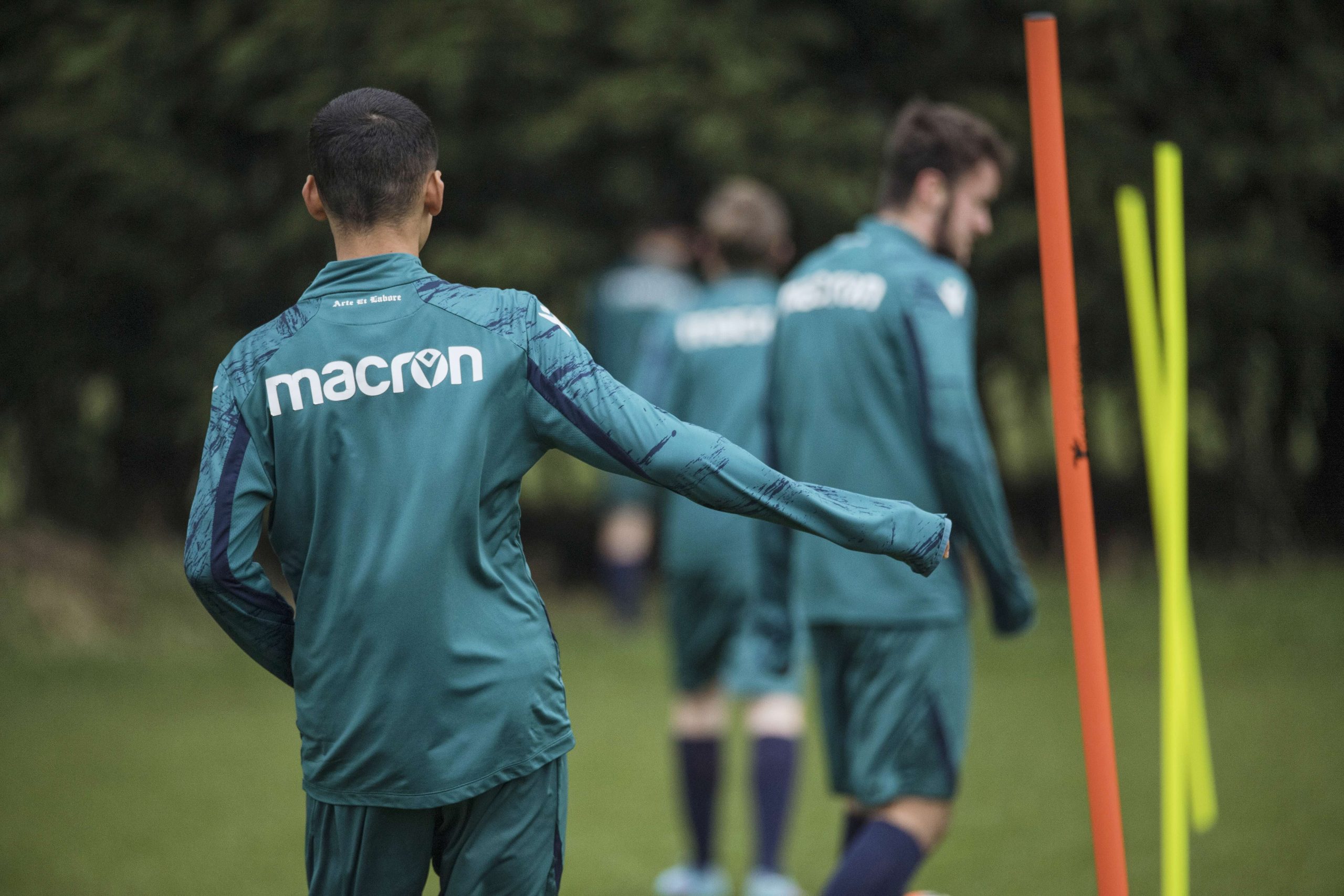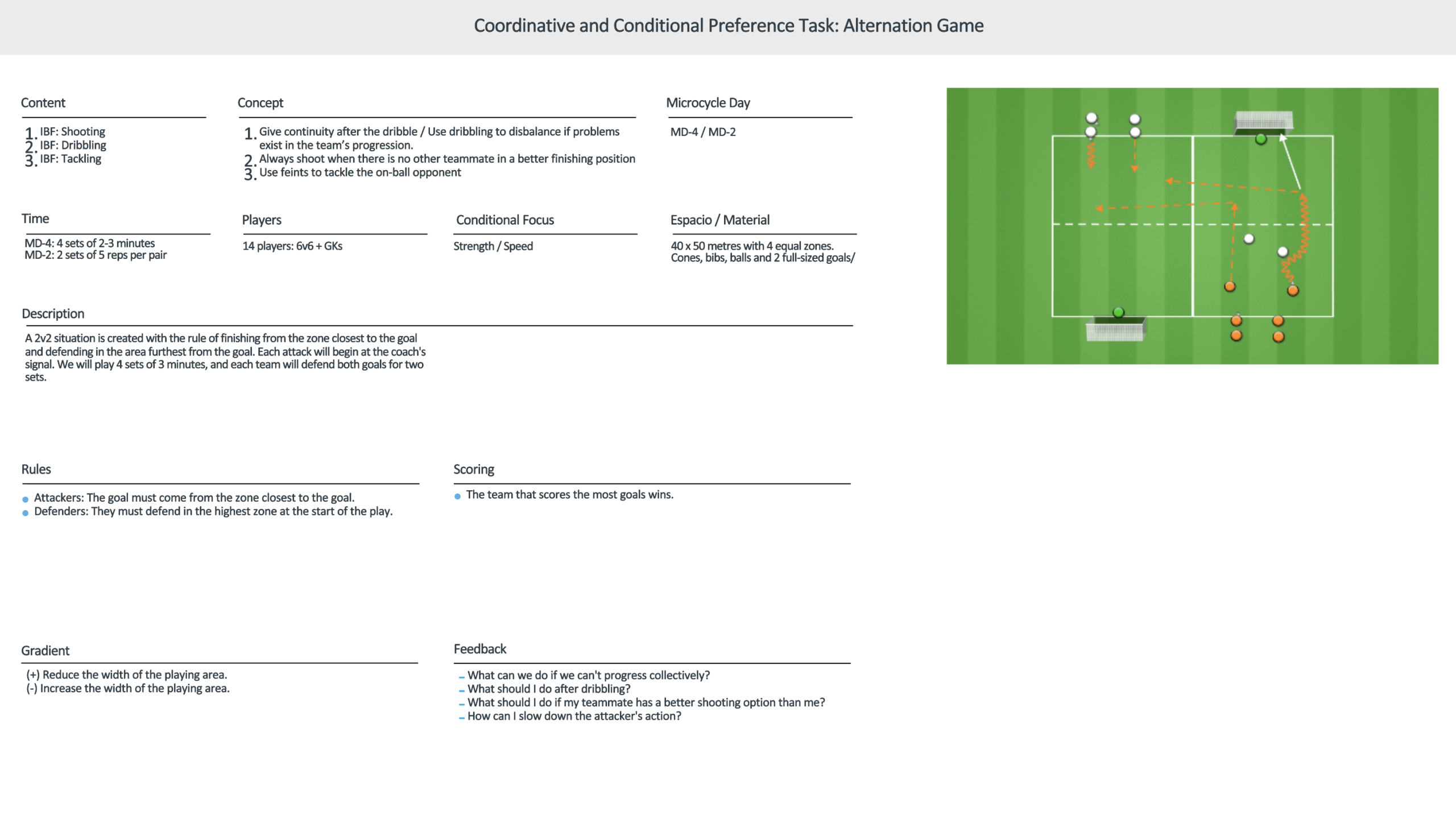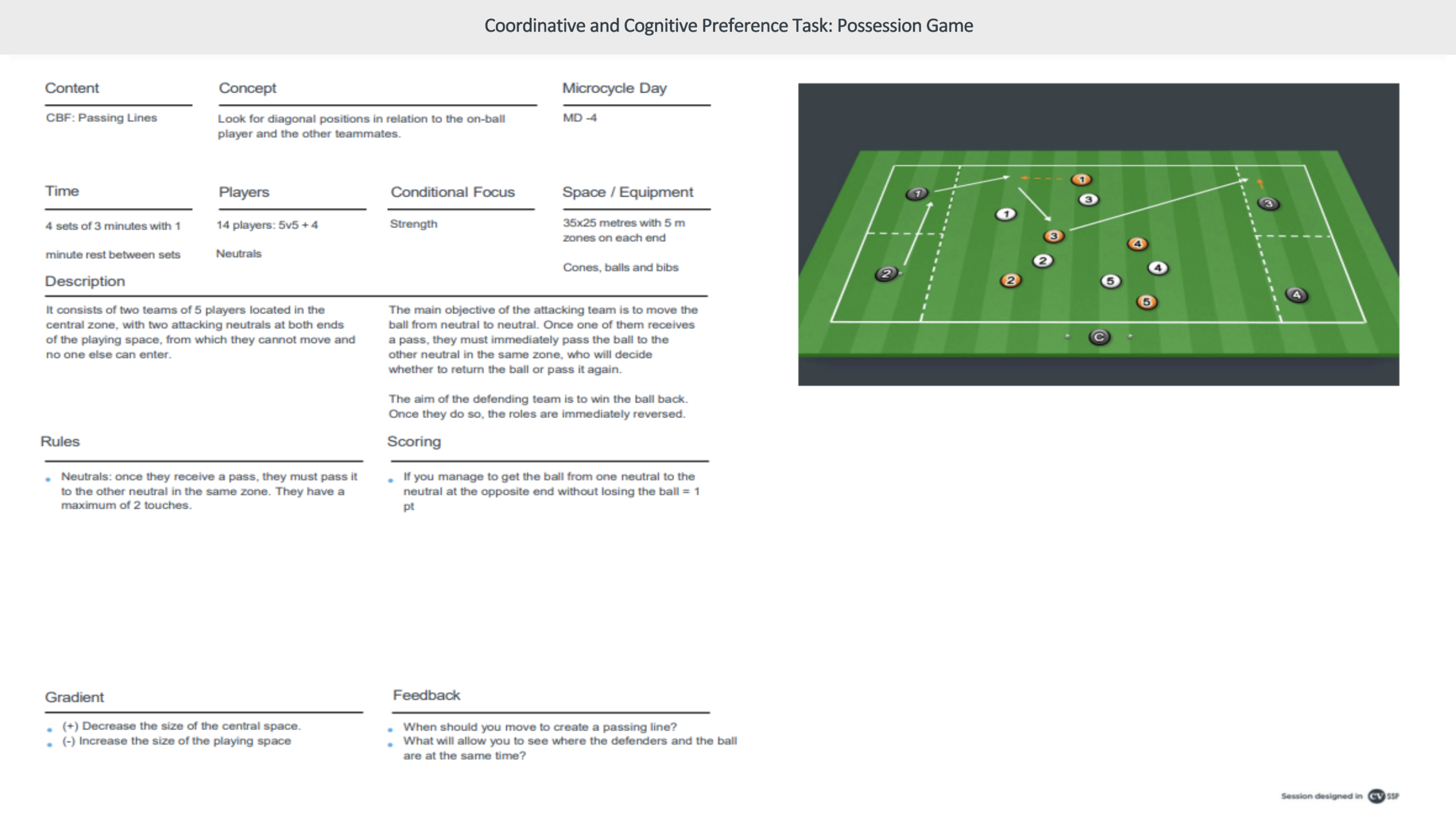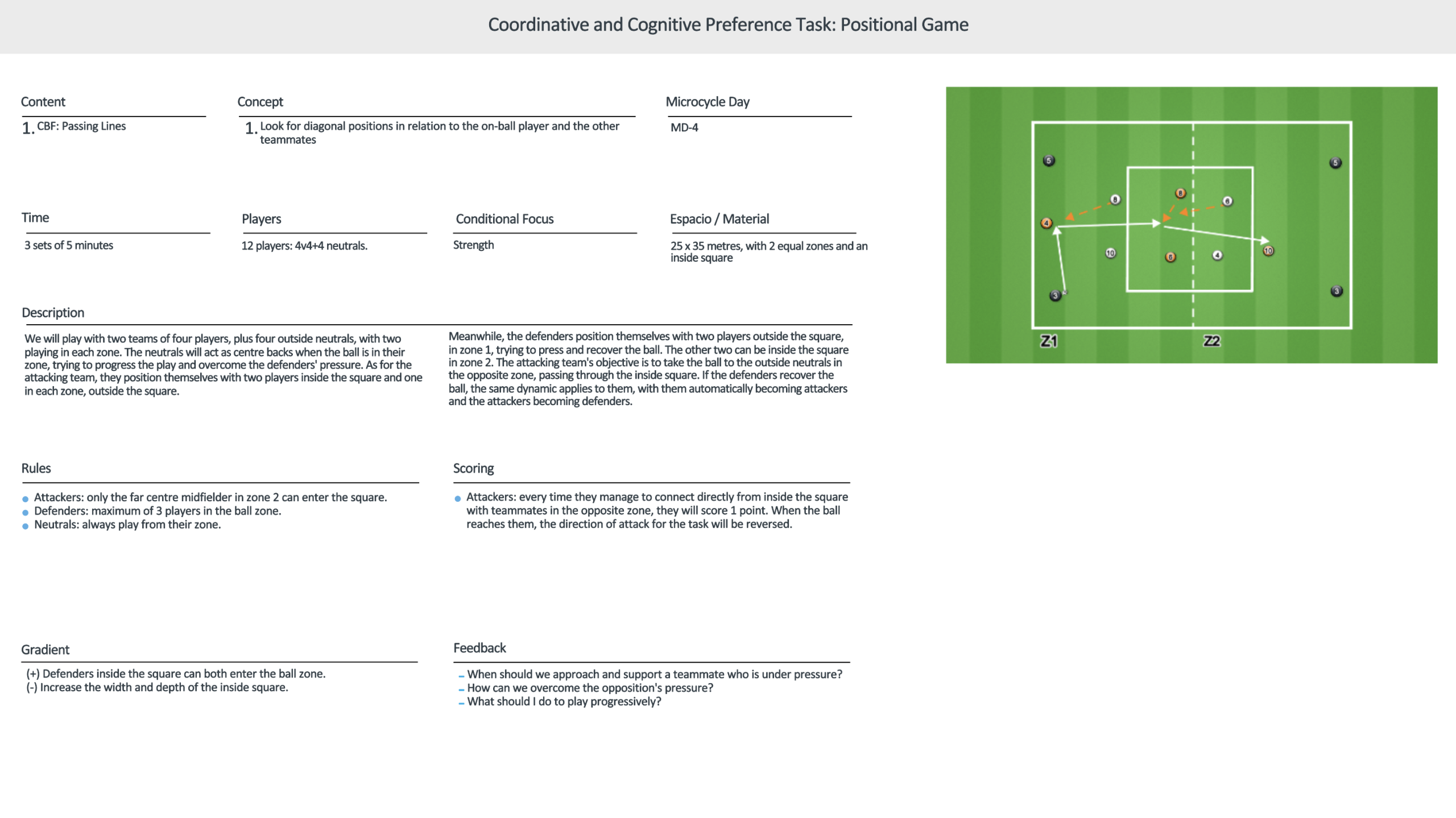The microcycle’s Strength Day (MD-4) is, as its name suggests, four days before the next match and three days after the previous match. To this end, the type of effort and load that players must endure on that day must be adjusted to the established conditional parameters.
In order to comply with the conditional parameters corresponding to the microcycle’s type of contraction, MBP Coaches’ School recommends using different didactic strategies. Below is a list of the most recommended ones:
1. Duels
On the one hand, continuous duels have a high conditional component, making them very physically demanding. On the other hand, intermittent duels involve players performing short actions at maximum intensity. Both types are very useful for the activation phase or main sub-phase of the session, as they allow for training all kinds of individual basic fundamentals and coordination aspects of specific fundamentals.
As it does not exceed 2vs2+1 neutral, the spaces are reduced, and the duration of the sets and reps does not exceed three minutes in a row due to the high physical demand.
Image 1. Example of intermittent duels to train coordinative concepts for individual fundamentals of the winger. Source: MBP Coaches’ School
2. Alternation Games
They are a didactic strategy based on transitions, as the ball is constantly being lost and regained. Therefore, they allow us to train both attacking and defensive content, provided that we can create the right environment for both to occur.
They are very useful for the activation phase or main sub-phase, allowing us to train any type of basic fundamental or even universal collective fundamentals. The number of players is low (it should not exceed GK+4 vs GK+4) and the intensity is very high, so three to five sets of three to four minutes each will be worked on.
Finally, the playing spaces will be small or medium, depending on the content to be trained and the number of players.
Image 2. Ejemplo de juego de alternancia para entrenar fundamentos básicos individuales. Source: MBP Coaches’ School
3. Possession Games
Its continuous format and low level of specificity allow this didactic strategy to be used on high-intensity days, although it can also be used on recovery or endurance days.
Taking into account the demands of MD-4, there should be between three and five players per team, and the spaces should be small or reduced in order to meet the conditional demands of acceleration, braking, deceleration, etc. that we are looking for on that day.
With this, we can use between two and four sets of between two and five minutes each, to maintain high intensities during the task.
Image 3. Example of a Possession Game to train a Collective Basic Fundamental. Source: MBP Coaches’ School
4. Positional Games
Within positional games, we only recommend two types for MD-4 of the microcycle: advantageous positional games and reduced positional games. Advantageous positional games are used in the activation phase or main sub-phase, as they involve few players (4v4+3 neutrals up to 5v5+4 neutrals) in small spaces (12x25m – 20x30m), so the intensity is high.
Reduced positional games will also be used in the same phases of the session, with a low number of players (from 4v4+2 neutrals to 5v5+2 neutrals) and small spaces, as in advantageous positional games.
For all these reasons, they are an ideal type of task for the microcycle’s strength day if we want to maintain medium-high levels of specificity.
Image 4. Example of a positional advantageous game for training a collective basic fundamental. Source: MBP Coaches’ School
5. Reduced Games
Reduced Games are ideal for the main part of the session, as they are competitive tasks that include all the elements of the real game. The sets will last between three and four minutes, with a total of between 15 and 20 minutes in small or confined spaces, allowing for very high levels of intensity to be maintained.
In turn, the number of players will also be reduced, ranging from GK+3 vs GK+3 to GK+6 vs GK+6 + 6 neutrals.
Image 5. Example of a reduced game to train a universal collective fundamental. Source: MBP Coaches’ School
With this in mind, and with a clear understanding of the needs to be met on the microcycle’s strength day (MD-4), these didactic strategies are ideal thanks to their format and characteristics, although they can also be used on other days of the microcycle with some modifications.
Would you like to learn more about high-performance training??
In the Master in High Performance Football, you will learn a comprehensive and complete tactical training method that will give you an in-depth understanding of all the structures of high-performance football. You will apply the basics of structured training and its relationship with Individual Fundamentals by Position (IFP), and discover how to train the team using complex thinking, relating it to Universal Collective Fundamentals and Line Collective Fundamentals.












